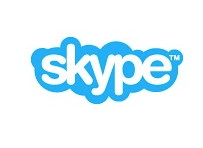After this morning’s news that the transition from Windows Live Messenger to Skype will be delayed, word comes that Skype will now begin testing a video messaging feature. Essentially like a video voicemail option, this will allow users to record messages for contacts who aren’t online, which can then be played back when they return to Skype.
The option is rolling out now to users on Mac, iOS, and Android for starters. That’s somewhat ironic, given Skype is Microsoft-owned and Windows is not included on the initial list. However, Windows users as well as Windows Phone users will be sent links to the messages, which they can then view online.
The video messages can be up to 3 minutes in length, and they’ll appear in Skype chat. On desktop platforms, the recordings will also be made available to download as well, similar to how shared files can be downloaded from Skype today.
News that this feature was coming was already revealed, as All Things D reminds us, due to a leak found in the Skype Terms of Service in December. Video messaging was already an option in the Skype-owned Qik service, but until now it had not been available in Skype’s flagship platform. Also of note, video voicemail was a long-ago feature in Microsoft’s Windows Live platform (Windows Live Video Messages), too, but that service never gained traction with users.
Today, Skype is up against a number of newer messaging challengers, from alternatives to SMS like Whatsapp, private photo and now video sharing social apps like Snapchat, and even head-to-head competitors like Tango, which actually introduced video voicemail as far back as December 2011. And that company’s user base has been growing, now approaching 100 million users. It has long since been time for Skype to catch up.
UPDATE: Here’s Skype’s official word on the whole “it’s not on Windows yet” thing –
“Video Messaging is in early release for testing in several markets for Android, iOS, and Mac with functionality to send and receive video messages. Users in these markets across all Windows desktop and mobile platforms can receive messages, too. We will have send capability in Windows by end of April. In the meantime, we continue to test this new feature in its early release.”
